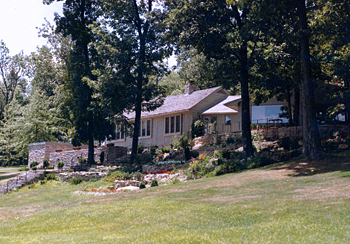INDIAN ARMED FORCES CHIEFS ON OUR RELENTLESS AND FOCUSED PUBLISHING EFFORTS

The insightful articles, inspiring narrations and analytical perspectives presented by the Editorial Team, establish an alluring connect with the reader. My compliments and best wishes to SP Guide Publications.

"Over the past 60 years, the growth of SP Guide Publications has mirrored the rising stature of Indian Navy. Its well-researched and informative magazines on Defence and Aerospace sector have served to shape an educated opinion of our military personnel, policy makers and the public alike. I wish SP's Publication team continued success, fair winds and following seas in all future endeavour!"

Since, its inception in 1964, SP Guide Publications has consistently demonstrated commitment to high-quality journalism in the aerospace and defence sectors, earning a well-deserved reputation as Asia's largest media house in this domain. I wish SP Guide Publications continued success in its pursuit of excellence.
- Indian Air Force Aims for Full Indigenous Inventory by 2047 — Air Chief Marshal A.P. Singh
- General Upendra Dwivedi takes over as the Chief of the Army Staff
- Rajnath Singh assumes charge as Defence Minister for the second consecutive term
- Admiral Dinesh K. Tripathi assumes Command of the Indian Navy as 26th Chief of the Naval Staff
- Prime Minister witnesses 'Bharat Shakti' – a Tri-Services Firing and Manoeuvre Exercise in Pokhran, Rajasthan
Camp David tested for security

It was 1969. The US was fighting a war in Vietnam and was involved in a Cold War with the Soviet Union. The military wanted to test Presidential security to see if improvements were needed. The Air Force Chief of Staff gave the order to a team of 40 men from the Office of Special Investigations (OSI) to plot a simulated assassination of the President.
The Air Force hit team chose Camp David as one of their targets. Security was tight whenever President Nixon was at the camp, so they planned their entry when they knew he wasn’t going to be there. They created a fake White House ID based on one they saw left hanging on a coat hook by a careless White House staffer at a restaurant in DC.
They called the Camp David security office and told them to expect a White House aide who needed a tour of the retreat. The fake aide arrived in a limo; showed his pass and was let inside the gates. He was given a tour of the Aspen Lodge, the President’s cabin at Camp David. When no one was looking, he made his move. He replaced a toilet paper roll in the Aspen bathroom with one that would release faux-poisonous gas when pulled.
In a second attack scenario at Camp David, the Air Force team drove to the public area of Catoctin Mountain Park and hiked through the woods armed with grenade launchers and duct tape. They climbed a 40-foot tree and positioned the grenade launchers toward the Presidential helipad.
The Air Force reviewed the results of this assignment and made the necessary security recommendations.





